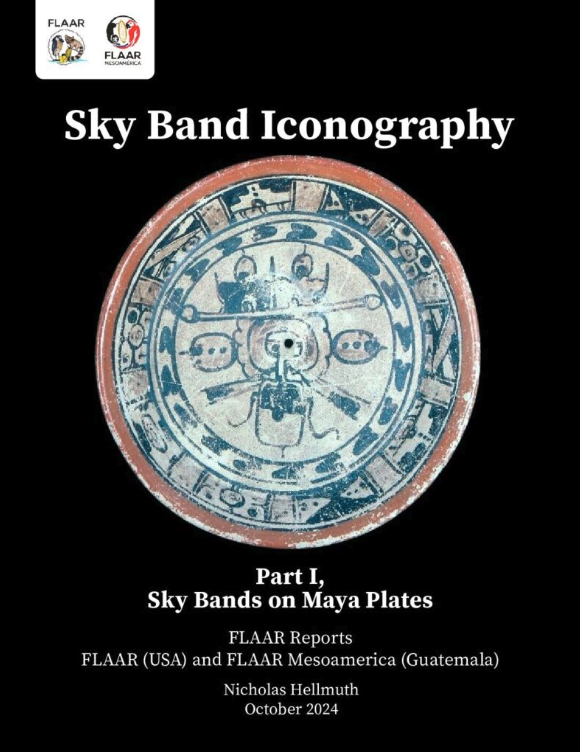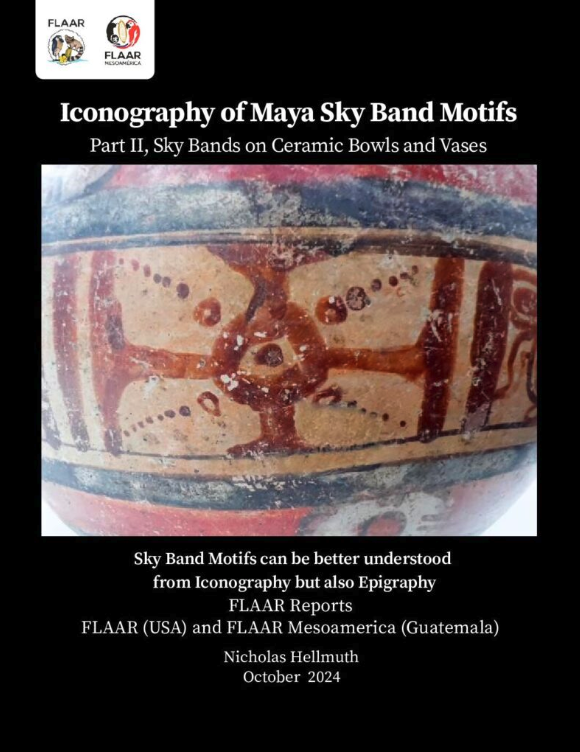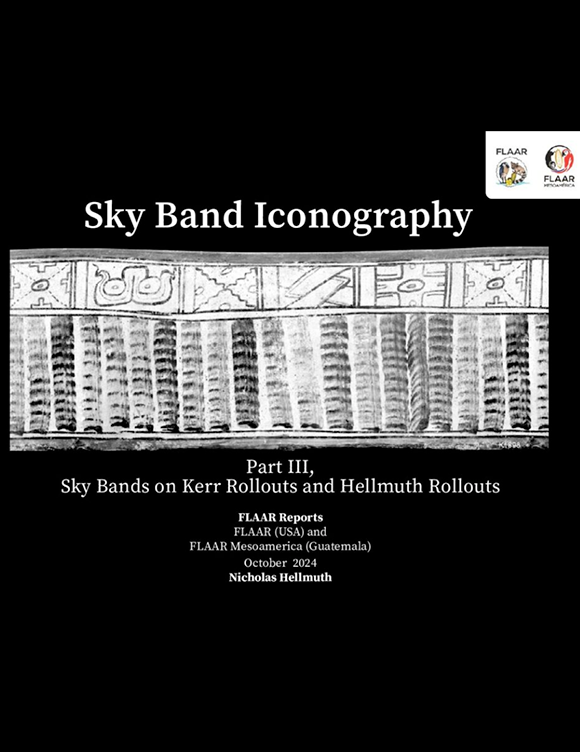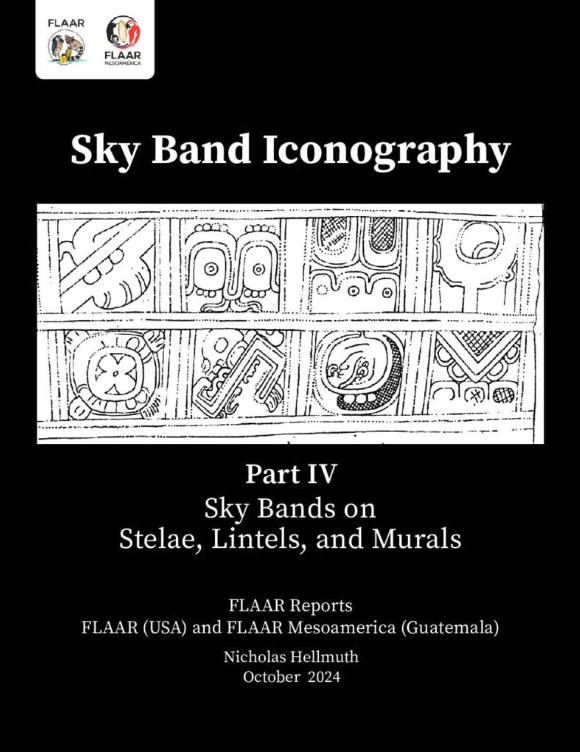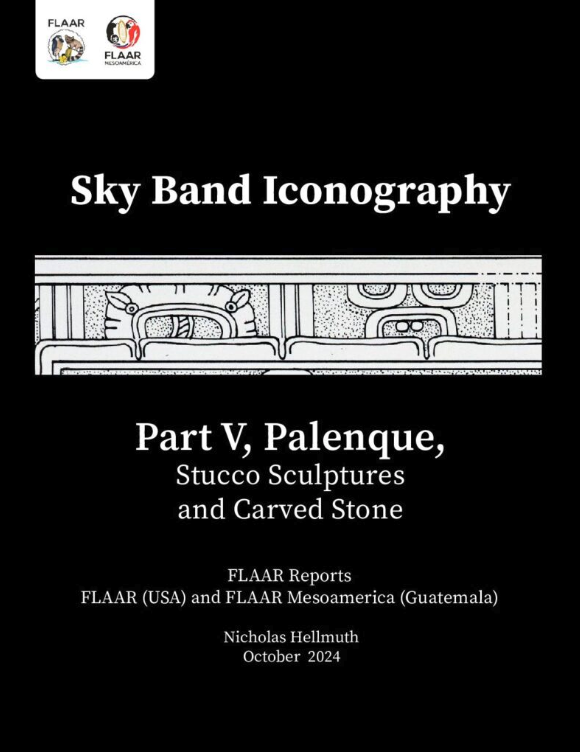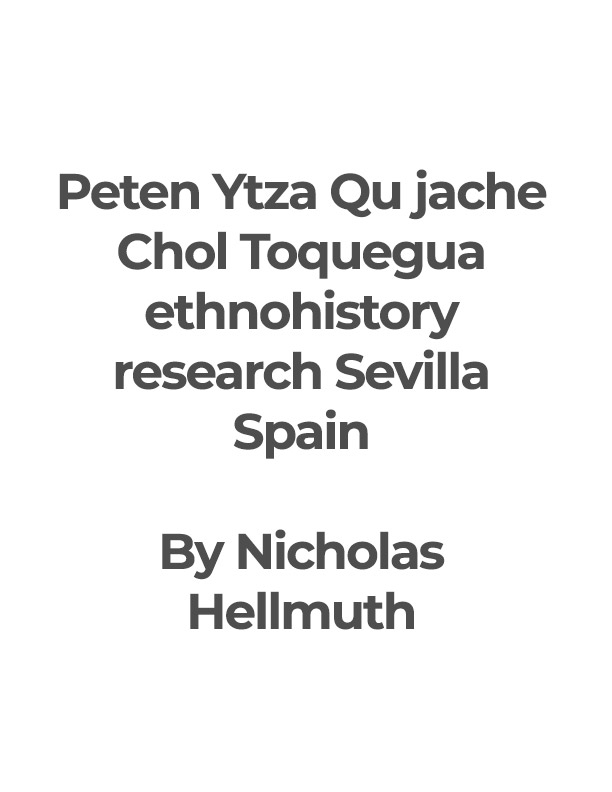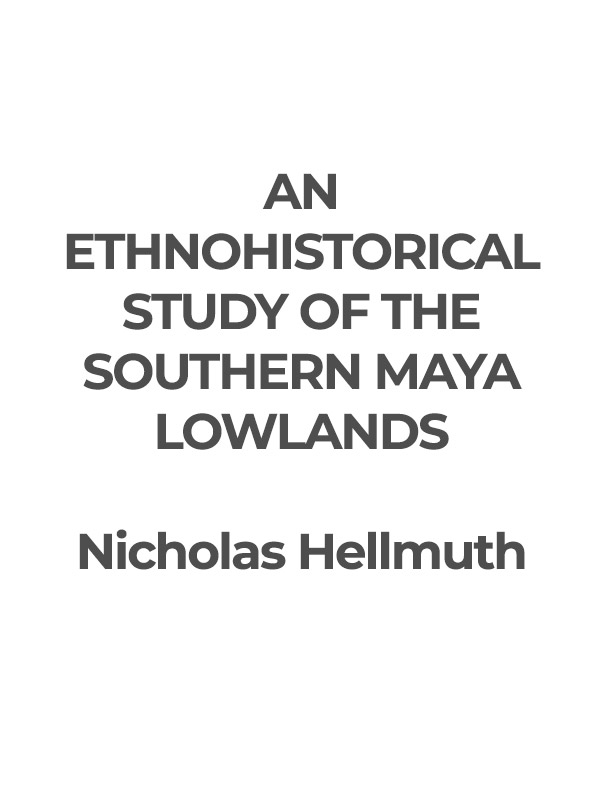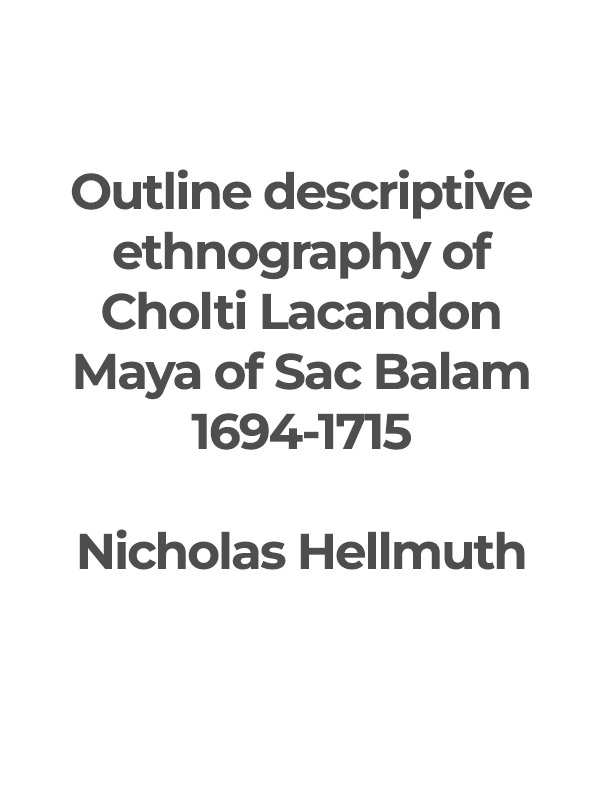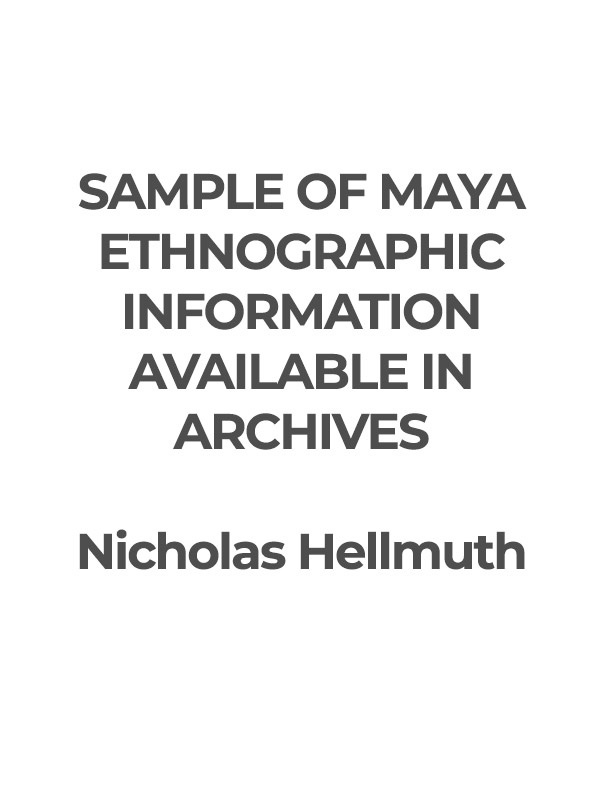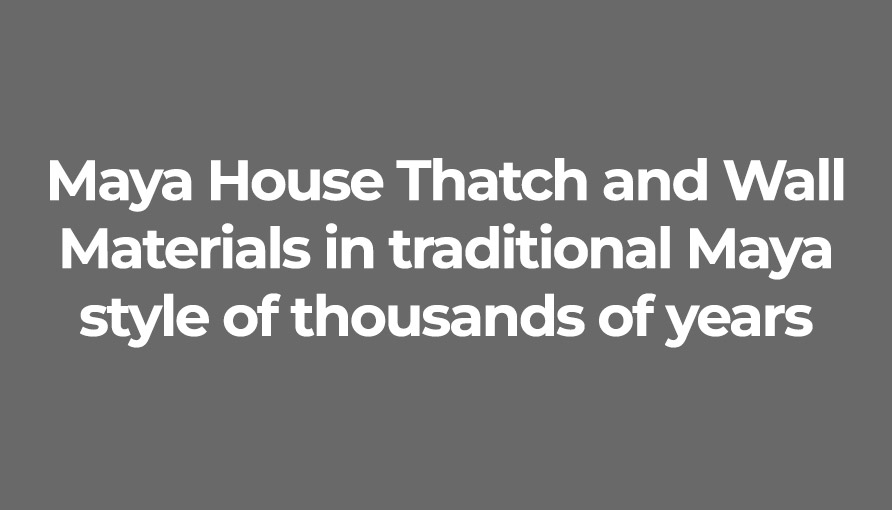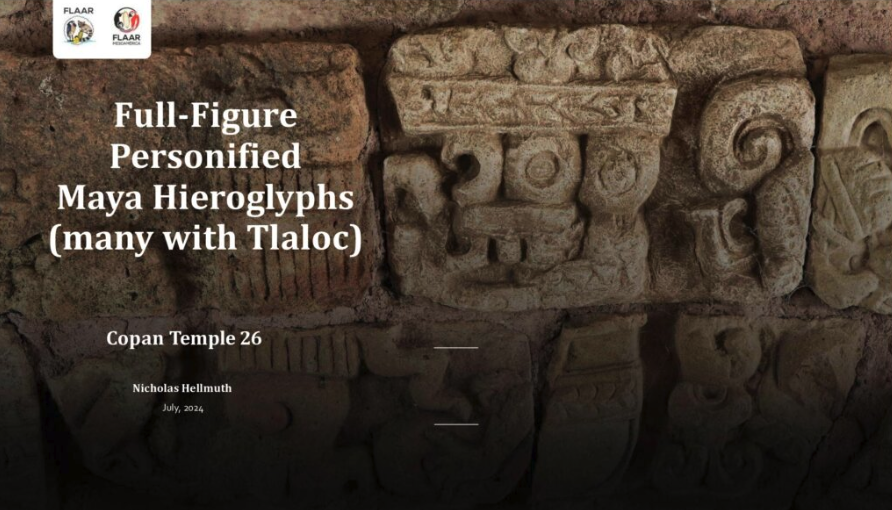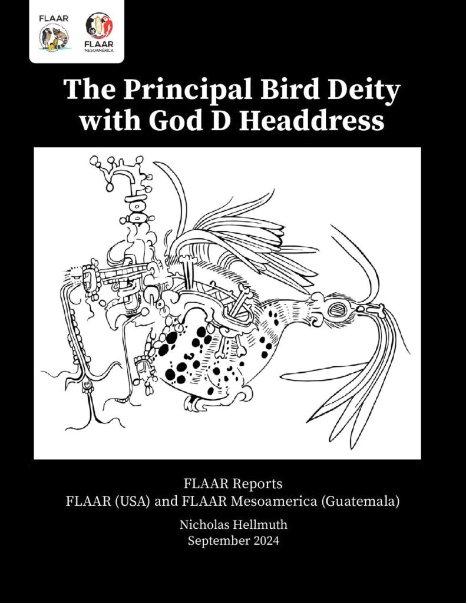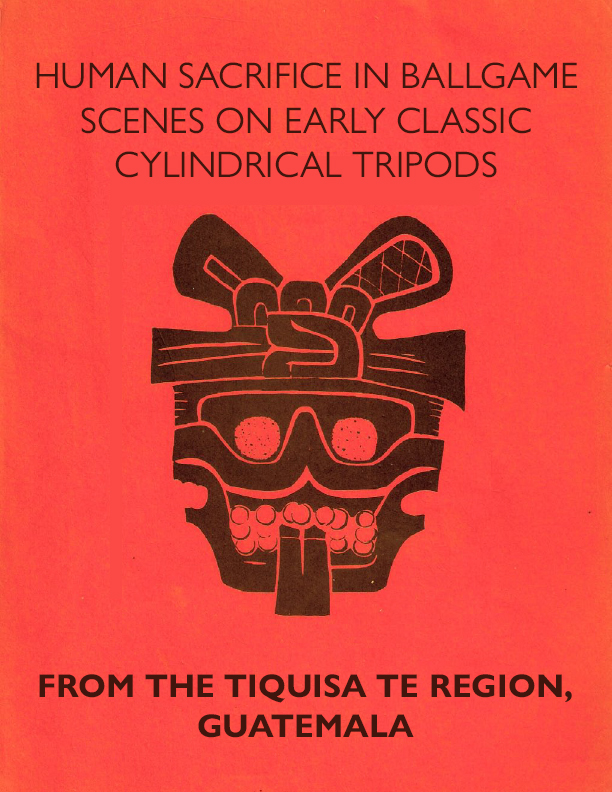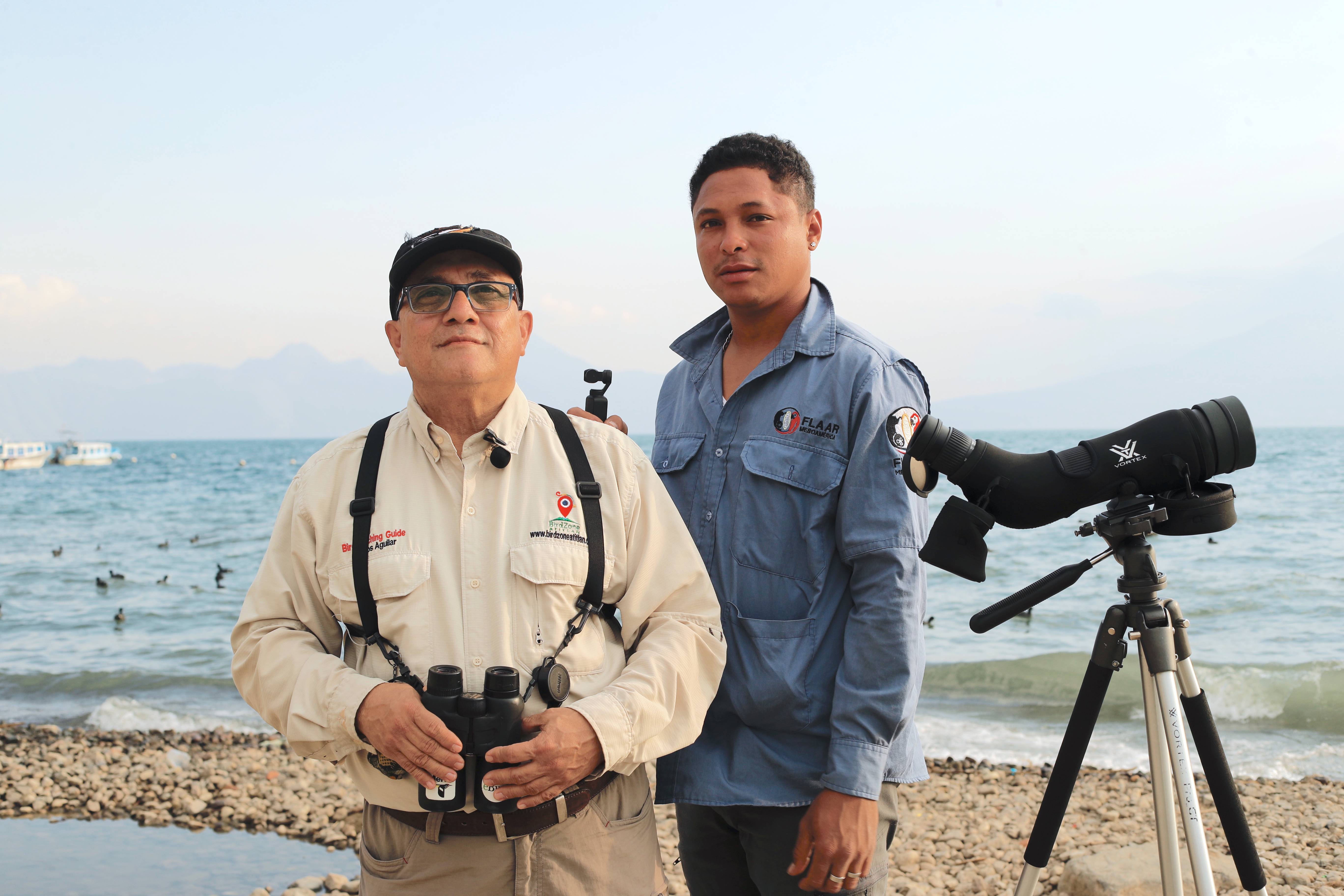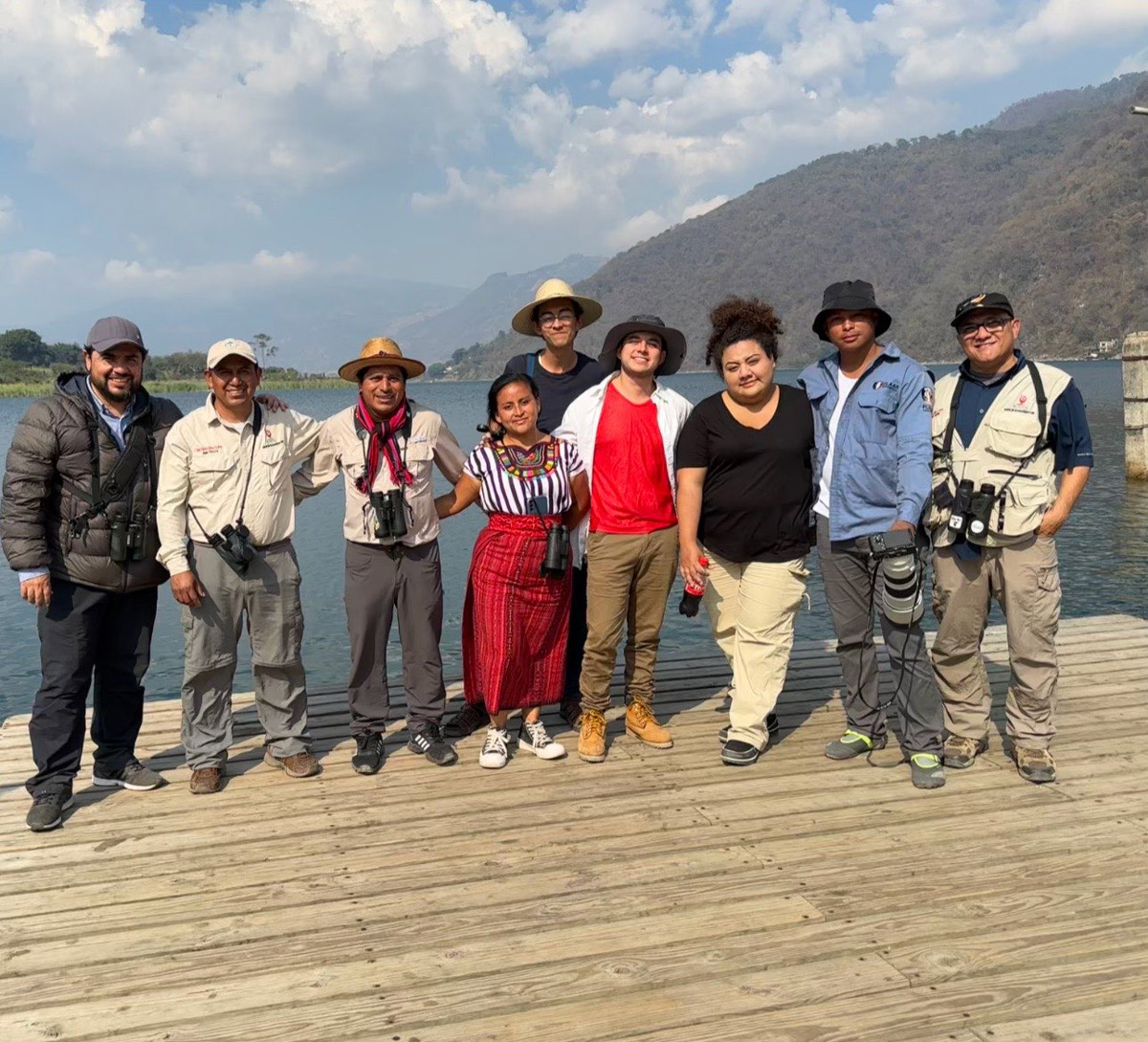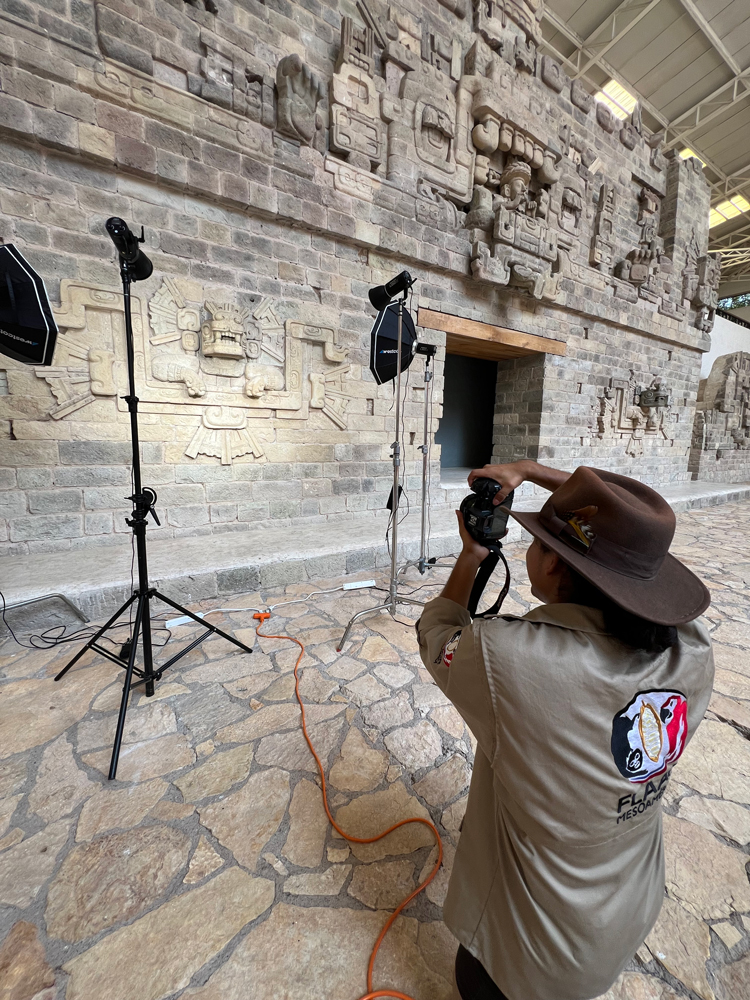
Iconography of remarkable cosmological motifs of Sky Bands in Classic Maya art
Posted November 13, 2024
by Nicholas Hellmuth
Sky Bands have a row of celestial motifs of stars, planets, and constellations that the Maya could see from Mesoamerica. We have dedicated many months this year to preparing six FLAAR Reports to show tons of documentation from Maya murals, stucco sculptures, stone stelae and panels, and all sizes and shapes of pottery (especially plates, vases, and bowls). The only Sky Band report that we are still working on is Sky Bands in the Maya codices. But in the meantime, here are six Sky Band reports to show you lots of remarkable information.
List of dozens of reports on Maya iconography
Posted Octuber 16, 2024
by Nicholas Hellmuth
This 33-page document lists the names and page quantity of all the books and reports on iconography of Maya vases, bowls, plates, cache vessels, etc. photographed during the 1970’s-1990’s. Also lists all the ethnohistory reports on Cholti-Lacandon of Chiapas and Maya cultures of Peten.
We are working to find each of these original hand-typed reports so we can scan them and make them all available as a downloadable PDF. Several libraries such as Harvard, Yale, etc. probably have 90% of these titles but once in PDF format on the Internet these documents can assist more students and more scholars.
Peten Ytza, Quejache, Verapaz Chol, and Toquegua Maya ethnohistory
Posted by Nicholas Hellmuth
October 10, 2024
This report is an introduction to four Maya ethnic groups of Guatemala based on ethnohistory research conducted by Hellmuth in the archives of Sevilla, Spain, June-August 1971.
Discussed different Maya languages, agriculture, etc.
Full-figure personified Maya hieroglyphs and traditional Maya house architecture
Posted by Nicholas Hellmuth
September 19, 2024
Each July each year there are international symposia on Maya topics in Guatemala City. There is a MUNAE conference and a Museo Popol Vuh conference (which is also held at MUNAE and/or Universidad Francisco Marroquin).
This July (2024), I prepared a lecture for the MUNAE event on what the ancient Maya used as roof material and as material for the walls of their thatched domestic structures. This is based on over a decade of field trips to remote areas of the Q’eqchi’ Maya Highlands where the Carnegie Institution of Washington did not reach in their helpful research on Maya houses of other Maya areas. The FLAAR Reports on roof thatch may be the first with photographs from inside and outside of the Maya houses of roof thatch of heliconia leaves and other leaves that are neither guano nor corozo palm. Plus grass thatch roofs (documented by CIW but for other parts of Guatemala). The PDF is an updated English edition of the Powerpoint.
The second lecture was for the epigraphy conference organized by Camilo Lujan, Museo Popol Vuh, held at MUNAE. This shows the largest, longest text in the entire Maya area of personified full-figure hieroglyphs (so hieroglyphs where the head glyph has an entire body). These glyphs are from Copan Temple 26; we went to Copan in 2024 to accomplish this close-up photography of each individual glyph for the symposium. Over 40% of these full-figure glyphs are Tlaloc, as would be expected at Copan, Honduras. But these are all Late Classic, long after the imperial Teotihuacan capital collapsed. There is one PDF in Spanish and a separate PDF in English from the original Powerpoint.
All of these PDFs are in horizontal format, so they can be used by professors in their classroom.
Iconography and PSS Hieroglyphs on Altun Ha style Late Classic Maya vases
Posted by Nicholas Hellmuth
September 12, 2024
I am working at finding Primary Standard Sequence hieroglyphs. Here is a FLAAR Reports on the PSS of Altun Ha Style vases and bowls.
The style of these glyphs and the style of these ceramics from the area of the Maya site of Altun Ha, Belize is very different than the style of adjacent Peten to the west.
Hunting the Principal Bird Deity
Posted by Nicholas Hellmuth
September 11, 2024
Month by month we are trying to find Hellmuth’s 1990’s reports, especially those written while Hellmuth was at Japan’s National Museum of Ethnology (for six months in 1996). We scan these old publications and turn them into a PDF to make them available at no cost to students, scholars and the interested public.
We have multiple reports on iconography of hunting, since this theme is rarely done in PhD dissertations or articles. The present report is on Hunting the Principal Bird Deity. This sacred bird (a snake hawk) is often associated with God D (that we will show in another report later this month).
You can also see the Hero Twins with blowguns shooting at the Principal Bird Deity on the Blom plate (another report by Hellmuth).
Iconography of God D in three FLAAR Reports
Posted by Nicholas Hellmuth
September 10, 2024
God D is one of several “old men” deities (God D, God L, and God N are the three that have been identified so far).
God D has higher status than God L or God N. God D shares his headdress with some representations of the Principal Bird Deity.
Today we are publishing two iconography reports on God D and one short iconography report documenting that the Principal Bird Deity often wears the same headdress as God D.
FLAAR Report on iconography of God N
Posted August 29, 2024
by Nicholas Hellmuth
Here is a 169 page catalog of God N scenes that were known in the 1990’s. In early October we will publish more of the photographs in new year 2024 FLAAR Reports.
This discussion of God N also mentions God D and God L (since all three are very old men). We will be preparing separate reports on God D and God L.
If you are at a university with a large library, if you have a 1990’s Hellmuth report on God D and separate report on God L please let us know, since we need to scan these reports and make them available as PDFs.
Several FLAAR Reports on the Maya ballgame
Posted August 26, 2024
by Nicholas Hellmuth
During the 1980’s-1990’s I wrote over 3,000 pages on Maya iconography. Over 2,000 pages were on iconography of Maya ballgames and hunting (scenes which are related to each other). I wrote a lot of this during the 1990’s when I was in Japan for six months at their national museum (MINPAKU). Separately FLAAR organized international conferences at Brevard Community College in Florida. I wrote over a thousand pages on iconography as handouts to attendees. We are now working to find as many of these reports as possible, scan them, and turn them into PDFs to make they available to students, professors, and to the interested general public.
No scanner can turn a publication into an MS Word without hundreds of spelling errors (the scanner mis-reading different letters in the book). So each book has to be corrected line-by-line, page by page. We are now presenting several ballgame and associated publications. So don’t be surprised to find a few spacing errors and other hiccups.
The first report is on the ballplayer stelae of the Cotzumalhuapa culture of Bilbao area, Guatemala. These eight stelae are in a nice museum in Berlin, Germany.
The second book is the red cover with the black skull on it. The title is “Human Sacrifice in Ballgame Scenes on Early Classic Cylindrical Tripods from the Tiquisate Region, Guatemala.” 182 pages of text and about 62 pages of photographs of these ballgame scenes from the Early Classic.
The third report is on the “Pseudo-God L Headdress…” that is associated with warriors and with ballplayers.
You can share these with your friends after you download them.
Ethnoecology: a unique and integrated approach to knowledge
Posted August 25, 2024
by Researcher Alejandra Valenzuela
Edited by Sergio D’angelo Jerez
Ethnoecology is one of many ethnosciences, which derived from the study of ethnobiology. In that sense, and if we were to analyze the etymology of the word ethnobiology, we have that the Latin root ethno- means ethnicity, community or culture; bios- means life, and -ology is a suffix that means “the study of”. Taking this as a starting point, a primary definition for ethnoecology could be the study of the relationship between human communities with the life and environment that surrounds them.
To dive deeper into its concept, let's see what is the relation between ethnoecology and biology. Similar to the branches of biology itself, ethnobiology’s three main branches are: ethnobotany, ethnozoology and ethnoecology. Ethnobotany studies how different human communities use the plants that grow in their environment. Ethnozoology, on the other hand, studies human communities and their relation to animals instead of plants. Moreover, ethnoecology has the intention to understand the integrated panorama that exists between a community and the physical and biological world that surrounds it. This includes biotic factors like flora, fauna, fungi and microorganisms, as well as abiotic factors like weather, hydric resources and soil conditions.
The term “ethnoecology” appeared in scientific research for the first time in 1954, in a dissertation written by the anthropologist Harold Conklin. In it, he analyzed the life of an indigenous community of the Philippines called the Hanunoo and their understanding of the world. He also reviewed their relationship with things like native agricultural and plant-naming strategies, shifting cultivation practices, and their knowledge regarding environmental factors like the seasons, climate and soil properties.
Since then, hundreds of studies have been conducted in the field of ethnoecology, within which, a large percentage has focused on studying communities of the American continent. Part of this interest may be attributed to the large diversity found in the American countries, both from a biodiverse and natural point of view, as in an anthropological or social perspective.
Guatemala is certainly one of those countries where natural and biological diversity abounds. To start with, it is considered one of the 19 megadiverse countries, and it is also considered pluricultural. This is not a surprise since Guatemala has over 20 different linguistic communities, most of which are Mayan. Also, due to its position between two oceans, and two continental masses, it encloses a large variety of ecoregions, which come with high levels of endemism.
This makes Guatemala a country with an exceptional potential for ethnoecological research. In fact, this biological and cultural singularity and diversity is what captured the hearts of the people responsible for the existence and research potential of FLAAR Mesoamérica.
It all started in 1965 when our co-founder, Nicholas Hellmuth, worked for a group of archeologists that were mapping the Maya City of Tikal. At the young age of 19, Nicholas worked for over a year as an intern for this project, with a passion for culture, photography, and a growing love for Guatemala’s amazing biodiversity. Since then, he has dedicated his whole life to visiting, doing research, photographing, documenting, and learning all about the species that make up the beautiful ecosystems of the region, and the relationship that different local communities have or have had with them.
Today, FLAAR and FLAAR Mesoamérica have become the vehicle for Dr. Nicholas’ interest regarding the natural world. Nowadays, the organization focuses on the study of the local uses for plants, mushrooms and animals as medicine, dye, food, construction, and their cultural or religious significance. In addition, another approach to our research is to look for certain species that were depicted in the iconography of the Ancient Maya cultures of Mesoamerica.
FLAAR Mesoamerica has chosen this particular approach to the ethnosciences, but the applications for these sciences are vast. For instance, these may integrate local and global wisdom and we can find them useful in fields like medicine, conservation and ecology, as well as in the development of ecological and cultural governmental policies. The potential of, not only ethnoecology, but also ethnobiology and all its branches, is huge. The integration of local, cultural and biological knowledge is a necessary tool in today’s worldviews, and it could aid in finding consolidating answers for today’s problems.
References:
- 2012
- La Etnobiología y la Etnoecología en Brasil hoy, 1. Etnoecológica 9 (1): 75-77.
- 2021
- Los pueblos indígenas de Guatemala. FLAAR Mesoamérica.
Available online:
https://flaar-mesoamerica.org/2021/08/26/los-pueblos-indigenas-de-guatemala/
- 2023
- Cacao in the Mayan Culture and other interesting facts. FLAAR Mesoamérica.
Available online:
https://flaar-mesoamerica.org/2023/07/07/cacao-in-the-mayan-culture-and-other-interesting-facts/
- 2022
- Homegarden Variation and Medicinal Plant Sharing among the Q’eqchi’ Maya of Guatemala. Econ Bot 76, 16–33.
Available online:
https://doi.org/10.1007/s12231-021-09537-0
- 2012
- La Etnoecología hoy: Panorama, avances, desafíos. Etnoecológica 9 (1): 1-16.
If you wish to donate your library on pre-Columbian Mesoamerica and related topics, FLAAR will be glad to receive your library and find a good home for it. Contact:
ReaderService@FLAAR.org















